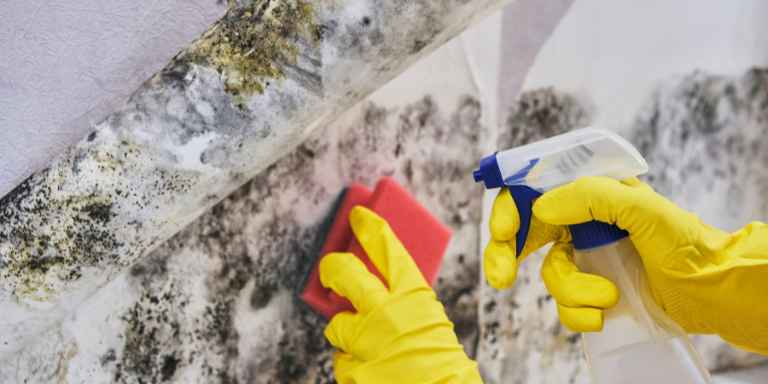
Water damage can be devastating to a home, and one common cause of such damage is a leaking pipe. When left untreated, the consequences extend beyond immediate water damage, potentially leading to serious mold problems. In Minneapolis, MN, where humidity levels can fluctuate and temperatures can dip, managing water damage and mold is crucial for maintaining a healthy living environment. This blog will guide you through the mold damage cleanup and restoration process following water damage from a leaking pipe.
Understanding the Impact of Water Damage
Water damage from a leaking pipe can manifest in various ways, including:
Visible Water Stains: Discoloration on walls, ceilings, and floors.
Structural Damage: Warped or buckled flooring, sagging ceilings, and compromised structural integrity.
Musty Odors: Unpleasant smells that often indicate hidden moisture and potential mold growth.
When a pipe leaks, water seeps into porous materials such as wood, drywall, and insulation. These materials can retain moisture, creating an environment conducive to mold growth. Mold spores can begin to grow within 24 to 48 hours of water exposure, making prompt action essential.
The Mold Damage Cleanup and Restoration Process
1. Initial Assessment and Safety Measures
Before starting the cleanup process, it’s crucial to assess the extent of the damage and ensure safety:
Inspect the Affected Areas: Identify where the leak occurred and how widespread the damage is. Check for water damage in walls, ceilings, floors, and hidden spaces.
Turn Off Power: If the leak is near electrical outlets or appliances, turn off the power to prevent electrical hazards.
Wear Protective Gear: Mold cleanup can expose you to harmful spores. Wear gloves, goggles, and a mask to protect yourself.
2. Water Extraction and Drying
Removing excess water and drying out affected areas is crucial to prevent further mold growth:
Extract Standing Water: Use pumps, wet vacuums, or towels to remove any standing water from floors and other surfaces.
Dry Out the Area: Employ dehumidifiers, fans, and open windows to increase airflow and reduce moisture. Ensure that all affected materials, including carpets and upholstery, are thoroughly dried.
3. Mold Inspection and Identification
Once the area is dry, inspect for mold growth:
Visible Mold: Look for mold growth on walls, ceilings, floors, and any other surfaces. Mold can appear as black, green, or white patches.
Hidden Mold: Check behind walls, under floors, and inside cabinets. Mold can often grow in hidden areas where moisture has accumulated.
4. Mold Removal and Cleanup
Removing mold requires a methodical approach to ensure that all spores are eradicated:
Contain the Area: Use plastic sheeting to contain the mold-affected area and prevent spores from spreading.
Remove Contaminated Materials: Discard materials that are heavily contaminated with mold, such as drywall, insulation, or carpeting. Place these materials in sealed bags to prevent spore release.
Clean Surfaces: Use specialized cleaning solutions to scrub mold off non-porous surfaces. For porous materials, like wood or drywall, consider using a mixture of water and detergent. Ensure thorough rinsing and drying afterward.
5. Repair and Restoration
After mold removal, repairing and restoring your home is the final step:
Reconstruct Damaged Areas: Replace damaged drywall, insulation, and flooring. Ensure that all repairs are done correctly to avoid future problems.
Improve Ventilation: Install or improve ventilation systems to reduce humidity and prevent future mold growth.
Monitor for Recurrence: Regularly check the repaired areas for any signs of mold reappearance or moisture issues.
Preventing Future Mold Problems
Preventing mold growth after water damage is crucial for long-term home health:
Address Leaks Promptly: Regularly inspect your home for leaks or plumbing issues. Repair any problems as soon as they are detected to prevent water damage.
Maintain Proper Humidity Levels: Use dehumidifiers and air conditioners to keep indoor humidity levels between 30% and 50%.
Regular Inspections: Conduct routine inspections of potential problem areas, such as basements and attics, to catch any early signs of water damage or mold growth.
Professional Help
While some homeowners may tackle mold cleanup on their own, seeking professional help can be beneficial, especially for extensive damage:
Expert Assessment: Professionals can provide a thorough assessment of water damage and mold growth, ensuring that all affected areas are addressed.
Advanced Equipment: Restoration experts use specialized equipment for water extraction, drying, and mold removal, which may be more effective than DIY methods.
Insurance Assistance: Professionals can assist with insurance claims, ensuring that you receive the coverage you’re entitled to for repairs and restoration.
Dealing with mold damage from a leaking pipe requires prompt and thorough action. In Minneapolis, MN, where environmental conditions can exacerbate water damage issues, addressing mold problems efficiently is crucial for maintaining a safe and healthy home. By following the outlined steps for cleanup and restoration, and considering professional assistance when needed, you can effectively manage mold damage and restore your home to its pre-damage condition.
If you’re facing mold issues from a leaking pipe or any other water damage, don’t hesitate to reach out to local restoration experts who can provide the expertise and support necessary for a successful recovery.
